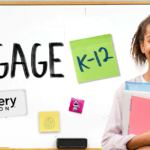Originally published in the March/April 2020 issue of AC&E/Equity & Access
Digital accessibility is the ability of electronic media – websites, electronic documents, software, mobile apps – to be accessed by all users in ways they can easily understand and navigate. “All users” includes our students, staff, and parents, and anyone who might access our web sites. Any user could have motor, visual, auditory, or cognitive disabilities that makes accessible design a requirement for a positive experience.
Digital accessibility is important as schools increasingly use the Internet to provide district information, online purchasing, newsletters, course materials, textbooks, and learning resources. It is our responsibility to ensure that all people are able to access the information we provide, whether they have disabilities or not.
Luckily, there are organizations to help us up our accessibility knowledge, providing resources we can use to increase our skills, provide professional development, and improve the learning experience for all.
A good starting point would be CoSN’s (cosn.org) Digital Accessibility Toolkit. This was developed in partnership with the Center on Technology and Disability at American Institutes for Research. This guide is freely downloadable and provides a solid foundation for understanding what accessible technologies are, what the regulations require, and what you can do to immediately begin improving accessibility in your district. Improving your digital learning tools can be thought of as applying UDL (Universal Design for Learning) to your electronic resources, to provide opportunities for customization for all students. Use this guide to learn about best practice and to find good starting points.
From my experience, I suggest that there are a few “low hanging fruit” actions that can be taken right away, and could constitute your first steps toward increased accessibility. One is to download this guide and start increasing awareness and knowledge about accessibility for you, your team, and your administrative colleagues. Second, make sure to post, in a prominent place on your web site, the fact that users may request documents in an alternate format as needed. Third, make sure that all PDFs added to your site, or used as learning resources internally, are created from word processing documents and not from scanned pages that are simply images. And last, require an accessibility review as part of your purchasing and procurement of all new technologies.
Leveraging the knowledge and strategies from the toolkit, will position you as an EdTech Leader to help students access electronic material and increase educational equity for all.
The American Consortium for Equity in Education, publisher of the "Equity & Access" journal, celebrates and connects the educators, associations, community partners and industry leaders who are working to solve problems and create a more equitable environment for historically underserved pre K-12 students throughout the United States.
- American Consortium for Equity in Educationhttps://ace-ed.org/author/admin/
- American Consortium for Equity in Educationhttps://ace-ed.org/author/admin/April 23, 2025
- American Consortium for Equity in Educationhttps://ace-ed.org/author/admin/
- American Consortium for Equity in Educationhttps://ace-ed.org/author/admin/







